Opinion & Analysis
How Different Kinds of Breaking Putts Affect Tour Player Performance
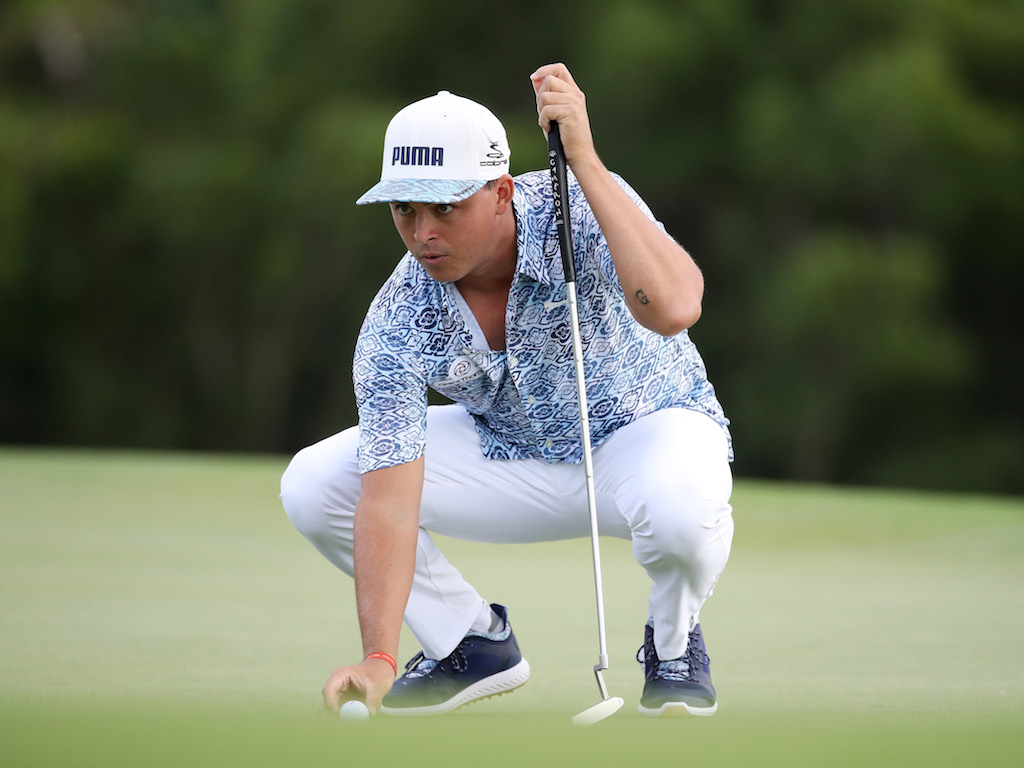
Editor’s Note: This is an excerpt from Rich Hunt’s 2017 Pro Golf Synopsis, which can be purchased here for $10. Stylistic changes were made to the story for online publication.
—
At the start of the 2015-2016 season, PGATour.com introduced the Strackaline app to ShotTracker. The app provides 3D topographical scans of each green on the PGA Tour, but its presence with the Tour was short-lived. By early 2016, the Tour stopped using the app in conjunction with ShotTracker. I found the Strackaline app to be helpful in exploring something we have long wondered about; how well Tour players putt on different types of breaking putts.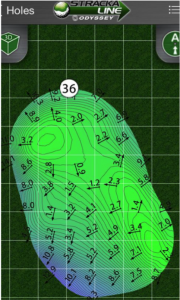
I was excited to use this app for my own Tour clients to help them with their putting, and I started to notice some interesting trends. Poor putters putted differently from average putters, and average putters putted differently from great putters. Some characteristics started to emerge when players putted significantly better than normal, as well as when they putted significantly worse than normal.
I then used that data and explore other random players: great putters, better-than-average putters, average putters, worse-than-average putters, and the worst putters on Tour. I was interested in seeing how different golfers putted from certain locations on the Fall Line Clock to see if there were any similar characteristics or trends with their putting.
Methodology
The Tour’s decision to stop using the Strackaline app made my research more difficult. The good news is that the Strackaline app has a function that allows you to place the pin in the position where you think it is located on the green. Then you can place a golf ball on a spot on the green and Strackaline will give the distance to the hole, as well as the contours of the particular putt and where exactly golfers should aim.
Granted, I cannot say that I was 100 percent accurate on my estimations of flag and putt location, but I did examine the following putts:
1. Putts that were on a very planar slope.
These are putts that have one break to them and are not double breakers. They don’t sit on a crown or in a “saddle.” I tried to get putts that were essentially right on one particular position on the Fall Line clock. Any putt that was too difficult to tell, I did not record the data.
2. Putts from 4-20 feet.
These are makeable putts that require more precise green reading, aim, touch/speed and stroke mechanics. I examined 38 right-handed-putting Tour players ranging from excellent putters like Luke Donald and Mackenzie Hughes to the worst putters on Tour like Boo Weekley and Robert Garrigus. In particular, I sighted events where the player was either greater than 1 standard deviation in Putts Gained for the entire event or worse than 1 standard deviation in Putts Gained for the entire event.
Matt Jones was a player I examined. For the 2016-2017 season, his Putts Gained was +0.170 per round. His standard deviation for the year was 0.7092. So I researched two events that he was greater than +0.8792 strokes per round (the AT&T Pebble Beach Pro-Am and The Greenbrier Classic) along with the two events where he putted worse than -0.5392 strokes per round (the AT&T Byron Nelson and the Shell Houston Open). I also examined four more events for Jones that were right around his average for the season.
Here’s a representation of the Fall Line Clock from golf instructor John Dunigan.
Twelve and 6 o’clock represent straight putts (12 o’clock is a straight downhill putt and 6 o’clock is a straight uphill putt). Putts from 4 to 8 o’clock are on an uphill gradient, and putts from 10 to 2 o’clock are on a downhill gradient. Putts from 1 to 5 o’clock break to the left, and putts from 7 to 11 o’clock break to the right.
Lastly, I normalized the data so the putting performance from each position on the Fall Line Clock would represent a probable make percentage from 10 feet. On average, 10-foot putts have a 38 percent make percentage on Tour.
Make Percentages from Different Locations
Here are the make percentages of all of the golfers and rounds I examined. I normalized the data to reflect the projected make probabilities from 10 feet, as well as how the normalized data works out.
There is a theory that downhill putts are easier to make than uphill putts. The reason is that the force vectors on a downhill putt tend to get the ball breaking toward the hole. With uphill putts, the force vectors tend to get the ball breaking away from the hole. My research refutes this theory to a degree. The make percentages are significantly higher on uphill putts, however; the second-highest make percentage location is at the 12 o’clock position (straight downhill).
My conclusion is that the downhill straight putt is very easy to make, but once the putt gets away from the 12 o’clock position it becomes increasingly more difficult to make. In summation, the more a putt breaks the more difficult it is to make — and uphill putts will break less than downhill putts.
Lastly, the players (all right-handed putters) had a slight bias in right-to-left putts versus left-to-right putts. This has been a common theory for as long as I can remember, and it held up to be true. The difference in make percentage, however, may be smaller than many people think it should be.
Break Biases and Putting Skill
The research showed a very strong trend in a player’s bias toward right-to-left or left-to-right breaking putts depending on their skill. I labeled golfers in the following categories:
- Greatest Putter (Upper 90th Percentile in Putts Gained or roughly top-20 in Putts Gained)
- Worst Putter (Lower 10th Percentile in Putts Gained or roughly ranking 170th or worse in Putts Gained)
- Good Putter (ranking roughly 30th to 70th in Putts Gained)
- Mediocre Putter (ranking roughly 120th to 160th in Putts Gained)
- Average Putter (ranking roughly 80th to 105th in Putts Gained)
I found that the vast majority of the players I analyzed had a significant bias toward either right-to-left or left-to-right breaking putts. Here’s an example of PGA Tour player Richy Werenski, who finished the year at 0.000 in Putts Gained. He neither gained nor lost strokes to the field for the entire season with his putter.
Werenski had a clear bias toward right-to-left putts (40.7 percent) versus left-to-right putts (33.7 percent). Just because a player was putting right-handed, however, did not mean the player would automatically have a bias toward right-to-left putts.
Here’s a breakdown of Rory McIlroy’s make probabilities on the Fall Line Clock.
Outside of the 11 o’clock versus the 1 o’clock position, McIlroy had a bias toward making left-to-right putts versus the corresponding location that broke right-to-left.
As it turns out, the putters that did not have a bias were from the “Greatest Putters” group. They had no significant bias toward leftward or rightward breaking putts. Mackenzie Hughes was a good example of this, as he finished 8th in Putts Gained. Not only did he make a high percentage of putts from most locations on the Fall Line Clock, but he did not have a significant bias toward rightward or leftward breaking putts.
Out of all of the players I researched, making putts at 12 o’clock (straight-downhill), 6 o’clock (straight uphill) and 5 o’clock (uphill, breaks left) were consistently the putts with some of the highest make percentages out of all the Fall Line locations. The only players that could struggle to reach the normalized make percentage average of 38 percent from 10 feet from those locations were the “Worst Putters.” It was not always the case with some of the Worst Putters, but there was a segment of the population that could struggle to make those putts.
One of the conclusions I derived from this was that good putting is not necessarily about holing putts. It is fairly easy for better players to make relatively straight putts, and sometimes in a round the golfer may just happen to get a lot of putts that are fairly straight. On the other hand, the golfer may get a lot of breaking putts. That was one of the amazing things about Jim Furyk’s 58 at TPC River Highlands; only two of his putts were not fairly straight. Obviously his ball striking was phenomenal and he holed putts to shoot 58, but there was a certain amount of luck involved in continually getting favorable putt locations.
Break Biases on Performances Outside of Standard Deviation
I wanted to examine the times that golfers putted better or worse than one standard deviation. What are the commonalities when golfers putt significantly better or significantly worse than normal? Golfers that putted one standard deviation worse than their mean in Putts Gained did not have any noticeable change in their putting other than they just putted worse overall. This was particularly the case in breaking putts. The bias remained the same.
Here’s a look at the putting make probabilities from Billy Horschel on average versus the events where his putting was one standard deviation worse than the mean.
The results were different, however, when I examined golfers that putted one standard deviation greater than their mean. Horschel had a bias toward right-to-left breaking putts on his poor putting performances. The bias went away when he putted better than one standard deviation from his norm.
This was common with virtually every player I studied except for the “Greatest Putters” group, as they did not have a bias toward breaking putts to begin with. If they had a bias towards a particular break, they would often putt even better when they putted significantly better than normal. But they made incredible gains on the putts that broke in a direction that caused them problems — to the point that they were putting as well as they did on the breaking putts they preferred and no longer had a bias.
Conclusions
Based on the data we know the following:
- Tour players greatly favor uphill versus downhill putts as a whole.
- The exception was from 12 o’clock (straight-downhill).
- The best location for right-handed-putting Tour players was at 5 o’clock (uphill, slight break to the left).
- The vast majority of Tour players had some sort of bias toward right-to-left or left-to-right breaking putts.
- Not all right-handed-putting Tour players preferred right-to-left putts.
- As a whole, there was a moderate preference toward right-to-left putts from right-handed-putting Tour players.
- The best putters had virtually no bias toward right-to-left or left-to-right breaking putts.
- Virtually all Tour players consistently favored the 5 o’clock, 12 o’clock and 6 o’clock positions.
- The only Tour players that struggled with straight putts (6 or 12 o’clock) were in the “Worst Putters” category.
- Break bias disappears for a Tour player when they putt one standard deviation better than their mean in Putts Gained.
- Break bias is still present when the Tour player putts one standard deviation worse than their mean in Putts Gained.
For the non-Tour golfer, the data suggests that initial practice on putting should be done on straight putts. The only players I studied that did not do well on straight putts on occasion were the worst putters on Tour. While there has been debate as to how well Tour players putt in relation to the entire world’s golf population, I still tend to believe that even the worst putters on Tour are likely better than any segment of amateur golfers. Thus, if the worst putters of the Tour population can struggle with the straight putts, there’s a strong likelihood that amateur golfers will need to work on straight putts first in order to make a significant improvement in their putting over time.
Once straight putting develops, I recommend that golfers determine how well they putt on right-to-left versus left-to-right breaking putts and see if they have a bias toward a particularly type of break. I recommend that they try to hit putts from various distances and locations between 2 to 4 o’clock (right-to-left) versus 8 to 10 o’clock (left-to-right). It would be best to putt one ball from one side of the hole and then putt the next ball from the opposite side in order to truly determine bias.
Once bias is determined, I would recommend seeking instruction to determine what may be causing the bias against a particular breaking putt. Work on your green reading, stroke mechanics and speed/touch to improve your ability to make more putts from your weak side of the cup. Once you can become a stable putter on uphill putts and erase the bias on breaking putts, you will see much better results and more consistency in your ability to make putts on the course.
- LIKE94
- LEGIT10
- WOW22
- LOL1
- IDHT0
- FLOP0
- OB0
- SHANK16
19th Hole
Vincenzi’s LIV Golf Singapore betting preview: Course specialist ready to thrive once again

After another strong showing in Australia, LIV Golf will head to Sentosa Golf Club in Singapore looking to build off of what was undoubtedly their best event to date.
Sentosa Golf Club sits on the southern tip of Singapore and is one of the most beautiful courses in the world. The course is more than just incredible scenically; it was also rated 55th in Golf Digest’s top-100 courses in 2022-2023 and has been consistently regarded as one of the best courses in Asia. Prior to being part of the LIV rotation, the course hosted the Singapore Open every year since 2005.
Sentosa Golf Club is a par 71 measuring 7,406 yards. The course will require precise ball striking and some length off the tee. It’s possible to go low due to the pristine conditions, but there are also plenty of hazards and difficult spots on the course that can bring double bogey into play in a hurry. The Bermudagrass greens are perfectly manicured, and the course has spent millions on the sub-air system to keep the greens rolling fast. I spoke to Asian Tour player, Travis Smyth, who described the greens as “the best [he’s] ever played.”
Davis Love III, who competed in a Singapore Open in 2019, also gushed over the condition of the golf course.
“I love the greens. They are fabulous,” the 21-time PGA Tour winner said.
Love III also spoke about other aspects of the golf course.
“The greens are great; the fairways are perfect. It is a wonderful course, and it’s tricky off the tee.”
“It’s a long golf course, and you get some long iron shots. It takes somebody hitting it great to hit every green even though they are big.”
As Love III said, the course can be difficult off the tee due to the length of the course and the trouble looming around every corner. It will take a terrific ball striking week to win at Sentosa Golf Club.
In his pre-tournament press conference last season, Phil Mickelson echoed many of the same sentiments.
“To play Sentosa effectively, you’re going to have a lot of shots from 160 to 210, a lot of full 6-, 7-, 8-iron shots, and you need to hit those really well and you need to drive the ball well.”
Golfers who excel from tee to green and can dial in their longer irons will have a massive advantage this week.
Stat Leaders at LIV Golf Adelaide:
Fairways Hit
1.) Louis Oosthuizen
2.) Anirban Lahiri
3.) Jon Rahm
4.) Brendan Steele
5.) Cameron Tringale
Greens in Regulation
1.) Brooks Koepka
2.) Brendan Steele
3.) Dean Burmester
4.) Cameron Tringale
5.) Anirban Lahiri
Birdies Made
1.) Brendan Steele
2.) Dean Burmester
3.) Thomas Pieters
4.) Patrick Reed
5.) Carlos Ortiz
LIV Golf Individual Standings:
1.) Joaquin Niemann
2.) Jon Rahm
3.) Dean Burmester
4.) Louis Oosthuizen
5.) Abraham Ancer
LIV Golf Team Standings:
1.) Crushers
2.) Legion XIII
3.) Torque
4.) Stinger GC
5.) Ripper GC
LIV Golf Singapore Picks
Sergio Garcia +3000 (DraftKings)
Sergio Garcia is no stranger to Sentosa Golf Club. The Spaniard won the Singapore Open in 2018 by five strokes and lost in a playoff at LIV Singapore last year to scorching hot Talor Gooch. Looking at the course setup, it’s no surprise that a player like Sergio has played incredible golf here. He’s long off the tee and is one of the better long iron players in the world when he’s in form. Garcia is also statistically a much better putter on Bermudagrass than he is on other putting surfaces. He’s putt extremely well on Sentosa’s incredibly pure green complexes.
This season, Garcia has two runner-up finishes, both of them being playoff losses. Both El Camaleon and Doral are courses he’s had success at in his career. The Spaniard is a player who plays well at his tracks, and Sentosa is one of them. I believe Sergio will get himself in the mix this week. Hopefully the third time is a charm in Singapore.
Paul Casey +3300 (FanDuel)
Paul Casey is in the midst of one of his best seasons in the five years or so. The results recently have been up and down, but he’s shown that when he’s on a golf course that suits his game, he’s amongst the contenders.
This season, Casey has finishes of T5 (LIV Las Vegas), T2 (LIV Hong Kong), and a 6th at the Singapore Classic on the DP World Tour. At his best, the Englishman is one of the best long iron players in the world, which makes him a strong fit for Sentosa. Despite being in poor form last season, he was able to fire a Sunday 63, which shows he can low here at the course.
It’s been three years since Casey has won a tournament (Omega Dubai Desert Classic in 2021), but he’s been one of the top players on LIV this season and I think he can get it done at some point this season.
Mito Pereira +5000 (Bet365)
Since Mito Pereira’s unfortunate demise at the 2022 PGA Championship, he’s been extremely inconsistent. However, over the past few months, the Chilean has played well on the International Series as well as his most recent LIV start. Mito finished 8th at LIV Adelaide, which was his best LIV finish this season.
Last year, Pereira finished 5th at LIV Singapore, shooting fantastic rounds of 67-66-66. It makes sense why Mito would like Sentosa, as preeminent ball strikers tend to rise to the challenge of the golf course. He’s a great long iron player who is long and straight off the tee.
Mito has some experience playing in Asia and is one of the most talented players on LIV who’s yet to get in the winner’s circle. I have questions about whether or not he can come through once in contention, but if he gets there, I’m happy to roll the dice.
Andy Ogletree +15000 (DraftKings)
Andy Ogletree is a player I expected to have a strong 2024 but struggled early in his first full season on LIV. After failing to crack the top-25 in any LIV event this year, the former U.S. Amateur champion finally figured things out, finished in a tie for 3rd at LIV Adelaide.
Ogletree should be incredible comfortable playing in Singapore. He won the International Series Qatar last year and finished T3 at the International Series Singapore. The 26-year-old was arguably the best player on the Asian Tour in 2023 and has been fantastic in the continent over the past 18 months.
If Ogletree has indeed found form, he looks to be an amazing value at triple-digit odds.
- LIKE3
- LEGIT3
- WOW1
- LOL2
- IDHT0
- FLOP2
- OB0
- SHANK0
Opinion & Analysis
Ryan: Lessons from the worst golf instructor in America

In Tampa, there is a golf course that boasts carts that do not work, a water range, and a group of players none of which have any chance to break 80. The course is overseen by a staff of crusty men who have succeeded at nothing in life but ending up at the worst-run course in America. However, this place is no failure. With several other local courses going out of business — and boasting outstanding greens — the place is booked full.
While I came for the great greens, I stayed to watch our resident instructor; a poor-tempered, method teacher who caters to the hopeless. At first, it was simply hilarious. However, after months of listening and watching, something clicked. I realized I had a front-row seat to the worst golf instructor in America.
Here are some of my key takeaways.
Method Teacher
It is widely accepted that there are three types of golf instructors: system teachers, non-system teachers, and method teachers. Method teachers prescribe the same antidote for each student based on a preamble which teachers can learn in a couple day certification.
Method teaching allows anyone to be certified. This process caters to the lowest caliber instructor, creating the illusion of competency. This empowers these underqualified instructors with the moniker of “certified” to prey on the innocent and uninformed.
The Cult of Stack and Jilt
The Stack and Tilt website proudly boasts, “A golfer swings his hands inward in the backswing as opposed to straight back to 1) create power, similar to a field goal kicker moving his leg in an arc and 2) to promote a swing that is in-to-out, which produces a draw (and eliminates a slice).”
Now, let me tell you something, there is this law of the universe which says “energy can either be created or destroyed,” so either these guys are defying physics or they have no idea what they are taking about. Further, the idea that the first move of the backswing determines impact is conjecture with a splash of utter fantasy.
These are the pontifications of a method — a set of prescriptions applied to everyone with the hope of some success through the placebo effect. It is one thing for a naive student to believe, for a golf instructor to drink and then dispel this Kool-Aid is malpractice.
Fooled by Randomness
In flipping a coin, or even a March Madness bet, there is a 50-50 chance of success. In golf, especially for new players, results are asymmetric. Simply put: Anything can happen. The problem is that when bad instructors work with high handicappers, each and every shot gets its own diagnosis and prescription. Soon the student is overwhelmed.
Now here’s the sinister thing: The overwhelming information is by design. In this case, the coach is not trying to make you better, they are trying to make you reliant on them for information. A quasi Stockholm syndrome of codependency.
Practice
One of the most important scientists of the 20th century was Ivan Pavlov. As you might recall, he found that animals, including humans, could be conditioned into biological responses. In golf, the idea of practice has made millions of hackers salivate that they are one lesson or practice session from “the secret.”
Sunk Cost
The idea for the worst golf instructor is to create control and dependency so that clients ignore the sunk cost of not getting better. Instead, they are held hostage by the idea that they are one lesson or tip away from unlocking their potential.
Cliches
Cliches have the effect of terminating thoughts. However, they are the weapon of choice for this instructor. Add some hyperbole and students actually get no information. As a result, these players couldn’t play golf. When they did, they had no real scheme. With no idea what they are doing, they would descend into a spiral of no idea what to do, bad results, lower confidence, and running back to the lesson tee from more cliches.
The fact is that poor instruction is about conditioning players to become reliant members of your cult. To take away autonomy. To use practice as a form of control. To sell more golf lessons not by making people better but through the guise that without the teacher, the student can never reach their full potential. All under the umbrella of being “certified” (in a 2-day course!) and a melee of cliches.
This of course is not just happening at my muni but is a systemic problem around the country and around the world, the consequences of which are giving people a great reason to stop playing golf. But hey, at least it’s selling a lot of golf balls…
- LIKE17
- LEGIT2
- WOW0
- LOL4
- IDHT1
- FLOP4
- OB1
- SHANK23
19th Hole
Vincenzi’s 2024 Zurich Classic of New Orleans betting preview

The PGA TOUR heads to New Orleans to play the 2023 Zurich Classic of New Orleans. In a welcome change from the usual stroke play, the Zurich Classic is a team event. On Thursday and Saturday, the teams play best ball, and on Friday and Sunday the teams play alternate shot.
TPC Louisiana is a par 72 that measures 7,425 yards. The course features some short par 4s and plenty of water and bunkers, which makes for a lot of exciting risk/reward scenarios for competitors. Pete Dye designed the course in 2004 specifically for the Zurich Classic, although the event didn’t make its debut until 2007 because of Hurricane Katrina.
Coming off of the Masters and a signature event in consecutive weeks, the field this week is a step down, and understandably so. Many of the world’s top players will be using this time to rest after a busy stretch.
However, there are some interesting teams this season with some stars making surprise appearances in the team event. Some notable teams include Patrick Cantlay and Xander Schauffele, Rory McIlroy and Shane Lowry, Collin Morikawa and Kurt Kitayama, Will Zalatoris and Sahith Theegala as well as a few Canadian teams, Nick Taylor and Adam Hadwin and Taylor Pendrith and Corey Conners.
Past Winners at TPC Louisiana
- 2023: Riley/Hardy (-30)
- 2022: Cantlay/Schauffele (-29)
- 2021: Leishman/Smith (-20)
- 2019: Palmer/Rahm (-26)
- 2018: Horschel/Piercy (-22)
- 2017: Blixt/Smith (-27)
2024 Zurich Classic of New Orleans Picks
Tom Hoge/Maverick McNealy +2500 (DraftKings)
Tom Hoge is coming off of a solid T18 finish at the RBC Heritage and finished T13 at last year’s Zurich Classic alongside Harris English.
This season, Hoge is having one of his best years on Tour in terms of Strokes Gained: Approach. In his last 24 rounds, the only player to top him on the category is Scottie Scheffler. Hoge has been solid on Pete Dye designs, ranking 28th in the field over his past 36 rounds.
McNealy is also having a solid season. He’s finished T6 at the Waste Management Phoenix Open and T9 at the PLAYERS Championship. He recently started working with world renowned swing coach, Butch Harmon, and its seemingly paid dividends in 2024.
Keith Mitchell/Joel Dahmen +4000 (DraftKings)
Keith Mitchell is having a fantastic season, finishing in the top-20 of five of his past seven starts on Tour. Most recently, Mitchell finished T14 at the Valero Texas Open and gained a whopping 6.0 strokes off the tee. He finished 6th at last year’s Zurich Classic.
Joel Dahmen is having a resurgent year and has been dialed in with his irons. He also has a T11 finish at the PLAYERS Championship at TPC Sawgrass which is another Pete Dye track. With Mitchell’s length and Dahmen’s ability to put it close with his short irons, the Mitchell/Dahmen combination will be dangerous this week.
Taylor Moore/Matt NeSmith +6500 (DraftKings)
Taylor Moore has quickly developed into one of the more consistent players on Tour. He’s finished in the top-20 in three of his past four starts, including a very impressive showing at The Masters, finishing T20. He’s also finished T4 at this event in consecutive seasons alongside Matt NeSmith.
NeSmith isn’t having a great 2024, but has seemed to elevate his game in this format. He finished T26 at Pete Dye’s TPC Sawgrass, which gives the 30-year-old something to build off of. NeSmith is also a great putter on Bermudagrass, which could help elevate Moore’s ball striking prowess.
- LIKE8
- LEGIT3
- WOW1
- LOL1
- IDHT0
- FLOP3
- OB1
- SHANK2
-

 19th Hole2 weeks ago
19th Hole2 weeks agoJustin Thomas on the equipment choice of Scottie Scheffler that he thinks is ‘weird’
-

 19th Hole2 weeks ago
19th Hole2 weeks ago‘Absolutely crazy’ – Major champ lays into Patrick Cantlay over his decision on final hole of RBC Heritage
-

 19th Hole3 weeks ago
19th Hole3 weeks agoTwo star names reportedly blanked Jon Rahm all week at the Masters
-

 19th Hole3 weeks ago
19th Hole3 weeks agoReport: LIV Golf identifies latest star name they hope to sign to breakaway tour
-

 19th Hole3 weeks ago
19th Hole3 weeks agoNeal Shipley presser ends in awkward fashion after reporter claims Tiger handed him note on 8th fairway
-

 19th Hole3 weeks ago
19th Hole3 weeks agoBrandel Chamblee has ‘no doubt’ who started the McIlroy/LIV rumor and why
-

 19th Hole1 week ago
19th Hole1 week agoLET pro gives detailed financial breakdown of first week on tour…and the net result may shock you
-

 Equipment3 weeks ago
Equipment3 weeks agoJason Day on his recent switch into Srixon ZX5 and ZX7 Mk II irons

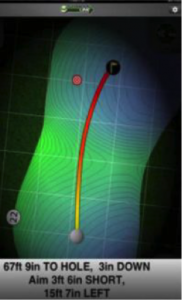
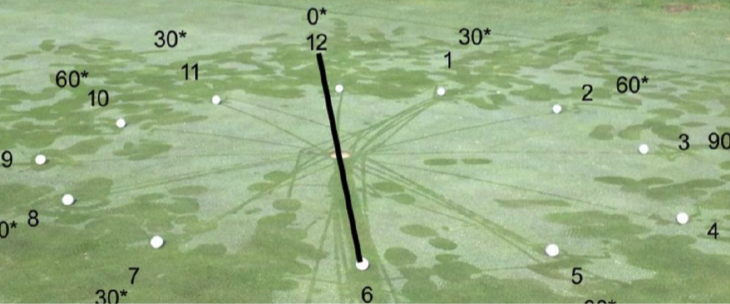
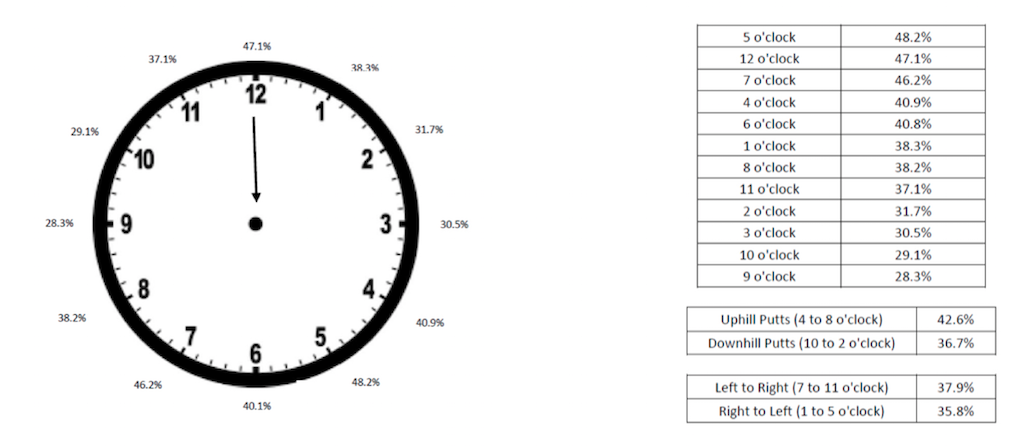

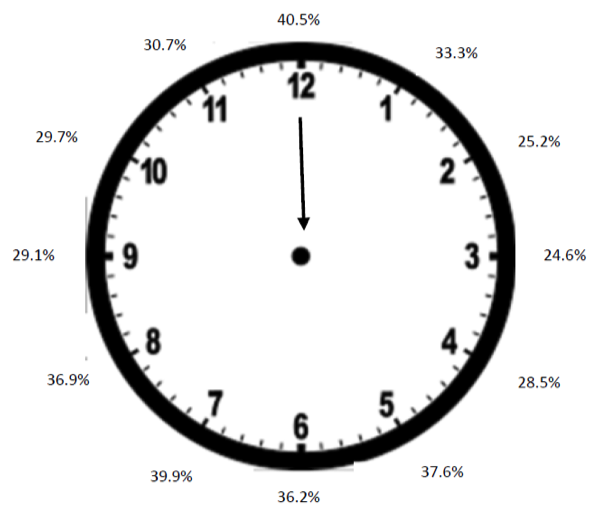

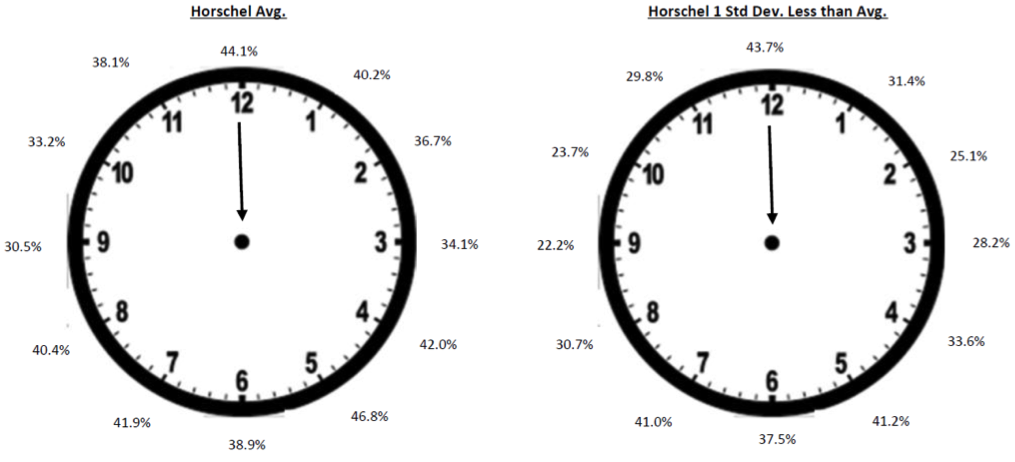
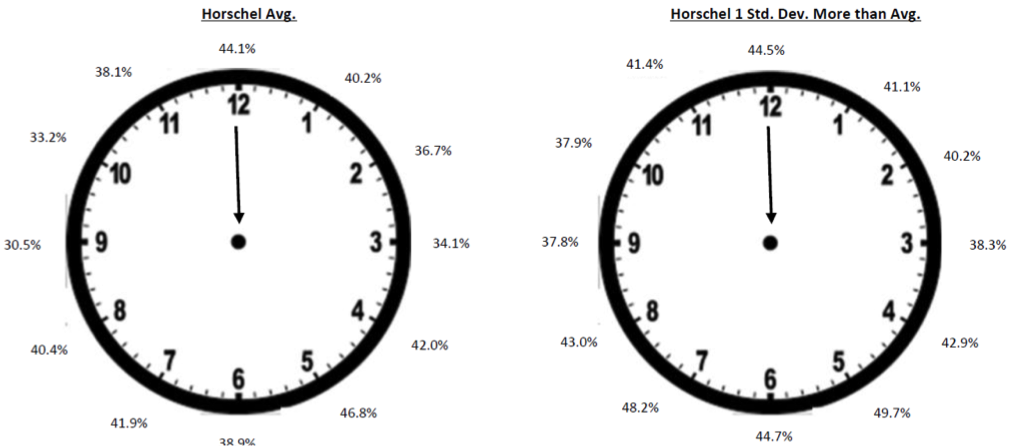

























Stephen Finley
Jan 18, 2018 at 8:54 pm
This is just terrific stuff. Real research with solid methodology is all too rare in this game. Thanks for posting. I’m saving it in an email file right away.
Scott
Jan 12, 2018 at 11:31 am
Great article Rich. I was told that left vs. right eye dominance had a being on which breaking putts one would prefer. Thank you for your effort.
CB
Jan 11, 2018 at 3:13 am
Yeah I think an untucked, un-buttoned shirt can definitely affect your putting as you’re not concentrating on making it, you’re more concerned with making a fashion statement
AJ
Jan 10, 2018 at 8:24 pm
This was definitly the most interesting articles I have read on wrx so far. Currious how green speeds and slopes affected the numbers between best and worst for a player….
The dude
Jan 10, 2018 at 2:23 pm
Really really good article…… as watching putting on TV is boring idecided to track in my head just how often tour pros miss on the low side….and it amazes me that when thy miss…..it seems ~ 75% of the time they miss on the low side….even they don’t play enough break